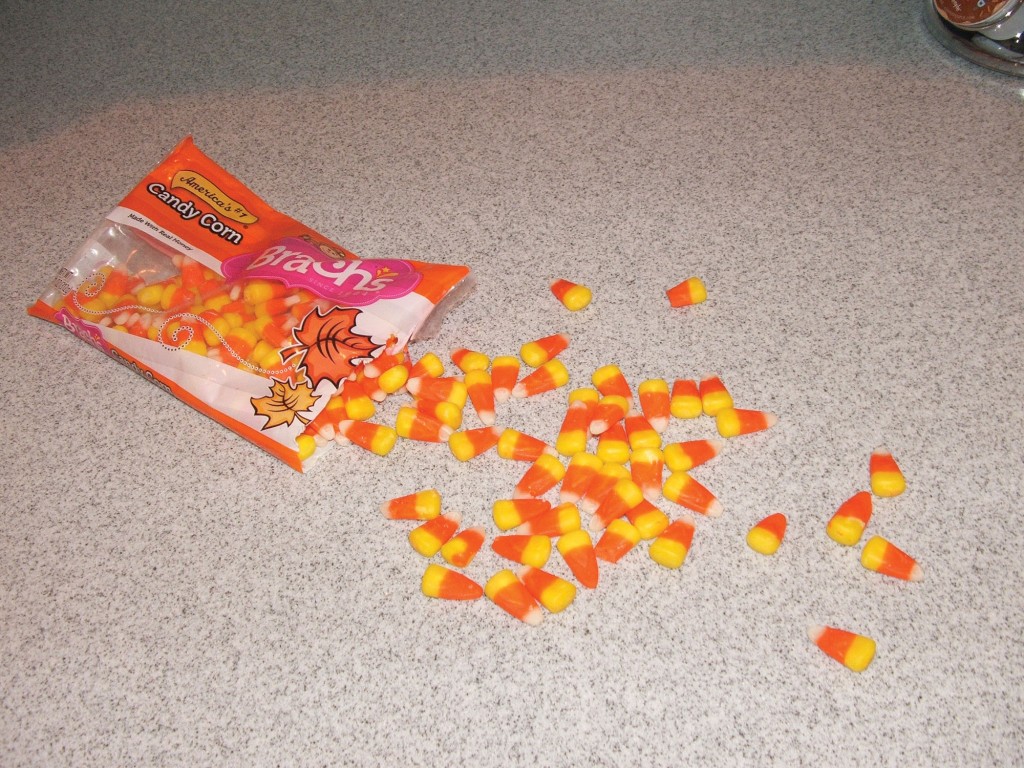Well, we have one of the fall holidays behind us, Halloween. Are you wondering how many calories you ate with those little candy corns? It is hard to keep track when you grab them by the handfuls. Put your mind at rest: each tiny candy has only 3.57 calories per kernel. Even though it tastes rich, it is fat free.
We eat these sugary little spikes known as candy corn year around, but they are most popular and mainly associated with Halloween. Actually Oct. 30 was National Candy Corn Day. They have been around for a very long time, invented in the year 1880 by George Renninger of the Wunderle Candy Company. This company in Philadelphia was the first to go into commercial production. It was later introduced to the mass market around 1898 by the Gustav Goelitz Confectionary Company in Cincinnati (which would later make the jelly bean) and quickly became popular thanks to its innovative multicolored look.
Making candy in those days was much more difficult than it is today with all the machinery available now. In those early days, large kettles were used to cook the basic ingredients of sugar, water and corn syrup. Marshmallow was later whipped in to make it softer. The hot candy mixture was then poured into hand-held buckets called ‘runners.’ Each runner held 45 pounds of the hot mixture. Men called ‘stringers’ walked backwards pouring the steaming candy into trays of cornstarch in kernel-shaped molds. A pass was made with the white, then orange and then the yellow. The last process is a glaze applied to make it shine. This was one of the few candies made in different colors and people were fascinated, adding to its popularity. The candy was so popular that other companies tried other vegetable shapes, such as turnips. Did not think that would go over and I notice there are none around. The candy was originally sold in bulk containers, packed in wooden buckets, tubs and cartons and delivered by wagon and train. Distribution of any distance was limited because of being perishable.
During World War I, Herman Goelitz, son of Gustav, moved to California and started his own company. Sales went down considerably during the recession and war times. In the 1970s when the price of raw sugar was so high, the company had to borrow money to keep afloat. While many other companies went out of business, the demand for candy corn kept the Goelitz Company from bankruptcy. You might better recognize the name that the Goelitz Company in later years changed to. It is now known as the Jelly Belly Candy Company. This little candy has remained unchanged for more than 100 years, although today machines do most of the work. Halloween accounts for 75 percent of the candy production and over the years the company has come out with reindeer corn (red, green and white), Indian corn (chocolate and vanilla flavored), Cupid corn for Valentine’s day (red, pink and white) and bunny corn for Easter (pastel colored).
Candy corn produced this year will amount to close to 35 million pounds. That is about nine billion individual kernels of corn. It is very popular in the United States and Canada. Brach’s is the main retailer of candy corn and sells enough candy each year to circle the earth 4.25 times if the kernels were laid end to end.
So if your trick-or-treater brought home many of the candy corns, just remember the 3.57 calories and enjoy them.












